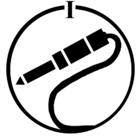In general, an amplifier that *can* put out more power than the speakers will accept (max.) does not mean that it *will* put out so much power. So you can use your system without worrying, because you are unlikely to keep increasing the volume after you hear the speakers distorting. (It isn’t subtle, you’ll know!)
However, if the system is at a party venue to be run as a professional sound system -- or on a rental property, where people are likely to just “turn it up to the max” without regard to whether or not the speakers are making crazy noises -- or similarly, where the volume control is nowhere near the sound of the speakers (which never need be the case with Sonos!), then you can limit the max volume as @Kumar suggests.
[Edit: At 95 dB/1W/1m, normally one would say it will get way too loud for you to listen to, long before you near the speaker’s max at 85W. But sound outdoors is never “as loud as you expect” like indoor speakers enclosed in a room. So you might want to set a maximum in the Sonos app, even if you do trust yourself and others: Go outside, near one of the two speakers for a zone, and listen *nearby* as you increase the volume (while playing modern dance music or whatever with low dynamic range just loudloudloud all the way thru). Back off just as soon as you hear anything suspicious, and that should be your max, no matter how loud it (doesn’t) sound down on the patio or wherever. Of course if you’re just using it for background new-age garden tinkling then you don’t need to bother with this at all.]

